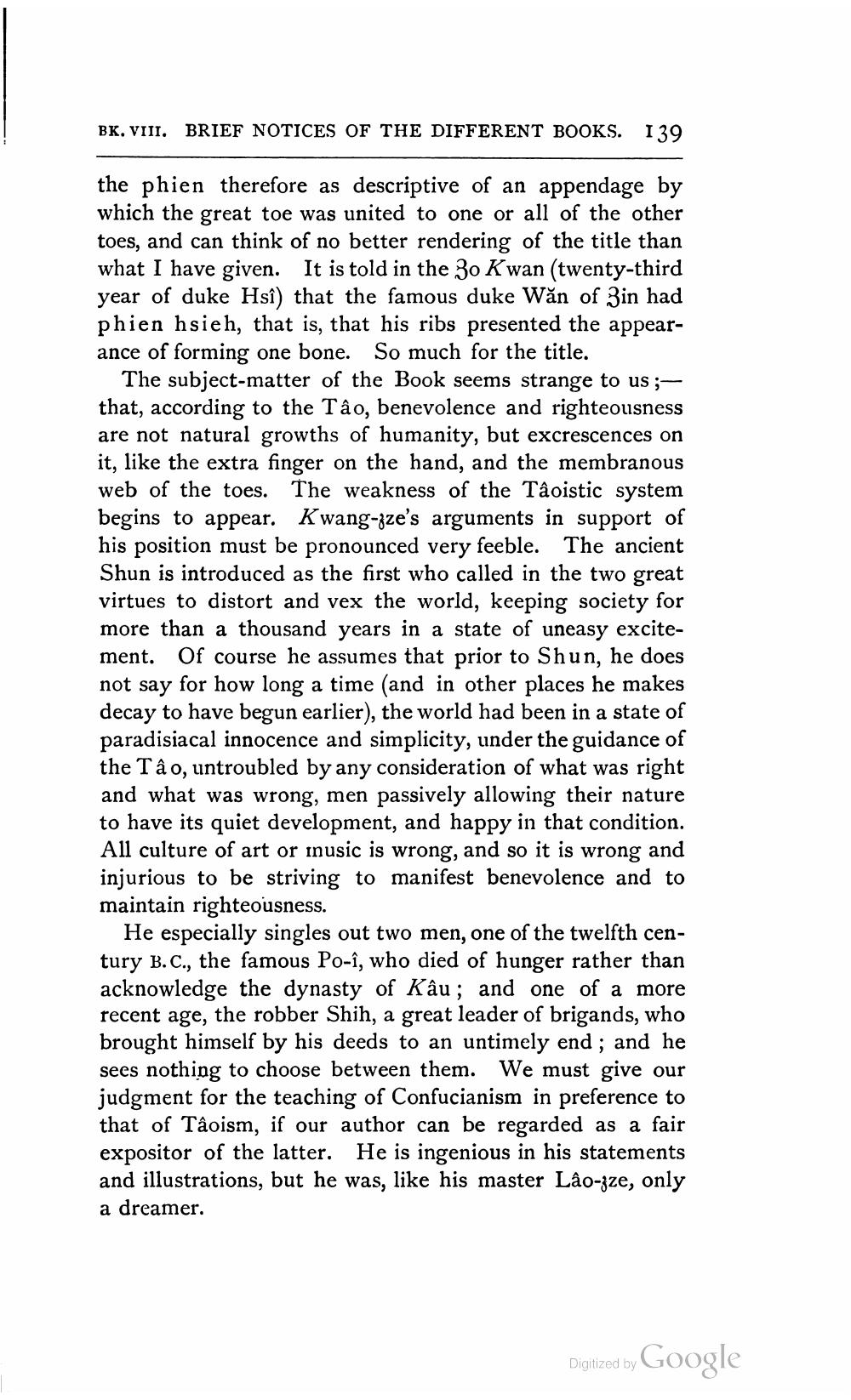________________
BK. VIII. BRIEF NOTICES OF THE DIFFERENT BOOKS. 139
the phien therefore as descriptive of an appendage by which the great toe was united to one or all of the other toes, and can think of no better rendering of the title than what I have given. It is told in the Zo Kwan (twenty-third year of duke Hsî) that the famous duke Wăn of Zin had phien hsieh, that is, that his ribs presented the appearance of forming one bone. So much for the title.
The subject-matter of the Book seems strange to us ;that, according to the Tâo, benevolence and righteousness are not natural growths of humanity, but excrescences on it, like the extra finger on the hand, and the membranous web of the toes. The weakness of the Tâoistic system begins to appear. Kwang-zze's arguments in support of his position must be pronounced very feeble. The ancient Shun is introduced as the first who called in the two great virtues to distort and vex the world, keeping society for more than a thousand years in a state of uneasy excitement. Of course he assumes that prior to Shun, he does not say for how long a time (and in other places he makes decay to have begun earlier), the world had been in a state of paradisiacal innocence and simplicity, under the guidance of the Tâo, untroubled by any consideration of what was right and what was wrong, men passively allowing their nature to have its quiet development, and happy in that condition. All culture of art or inusic is wrong, and so it is wrong and injurious to be striving to manifest benevolence and to maintain righteousness.
He especially singles out two men, one of the twelfth century B.C., the famous Po-î, who died of hunger rather than acknowledge the dynasty of Kâu; and one of a more recent age, the robber Shih, a great leader of brigands, who brought himself by his deeds to an untimely end; and he sees nothing to choose between them. We must give our judgment for the teaching of Confucianism in preference to that of Taoism, if our author can be regarded as a fair expositor of the latter. He is ingenious in his statements and illustrations, but he was, like his master Lâo-zze, only a dreamer.
Digitized by Google




